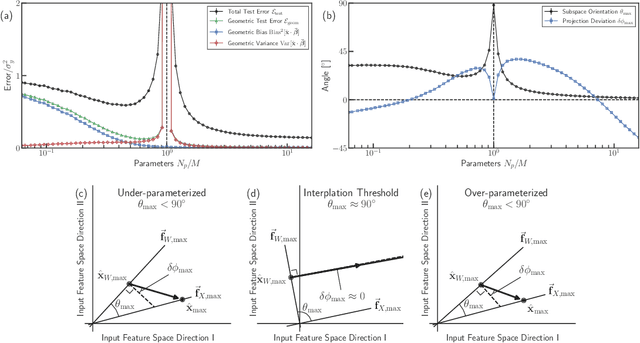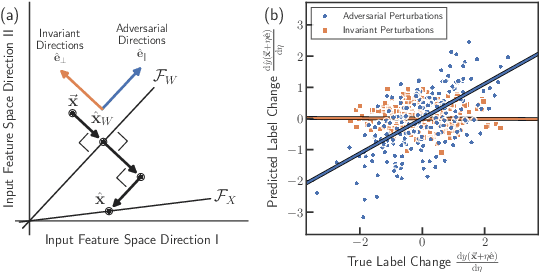The Geometry of Over-parameterized Regression and Adversarial Perturbations
Paper and Code
Mar 25, 2021



Classical regression has a simple geometric description in terms of a projection of the training labels onto the column space of the design matrix. However, for over-parameterized models -- where the number of fit parameters is large enough to perfectly fit the training data -- this picture becomes uninformative. Here, we present an alternative geometric interpretation of regression that applies to both under- and over-parameterized models. Unlike the classical picture which takes place in the space of training labels, our new picture resides in the space of input features. This new feature-based perspective provides a natural geometric interpretation of the double-descent phenomenon in the context of bias and variance, explaining why it can occur even in the absence of label noise. Furthermore, we show that adversarial perturbations -- small perturbations to the input features that result in large changes in label values -- are a generic feature of biased models, arising from the underlying geometry. We demonstrate these ideas by analyzing three minimal models for over-parameterized linear least squares regression: without basis functions (input features equal model features) and with linear or nonlinear basis functions (two-layer neural networks with linear or nonlinear activation functions, respectively).
 Add to Chrome
Add to Chrome Add to Firefox
Add to Firefox Add to Edge
Add to Edge